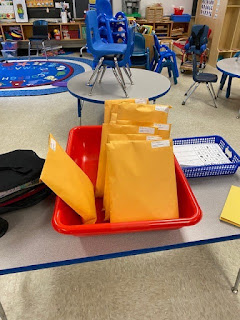Reflection From the Field: A Teacher’s Experience with Planning Remote Learning
By: Kimberly Chouinard, EC-SEAT Scholar
This week started with a bang! It’s hard to believe it still the same week, actually, it is a blend of 2 weeks. On Friday 3/13 the state of NH announced that all schools would be closed and move forward with a remote learning model during the COVID-19 pandemic.
On Friday (3/13), my school district sent an email asking staff to work from home on Monday (3/16) and to review options and ideas for beginning a remote learning model for their grade level.
On Monday (3/16) we had the first of many, preschool team Zoom meetings. We collaborated, shared, planned, and came up with a plan to begin to move forward planning for remote learning.
1. We agreed to create an activity calendar, with four developmental subheadings to work on for both the 3- and 4-year old programs.
2. We planned how we wanted to explain to parents how to implement these suggested activities at home.
3. We divided the tasks and started to work.
On Tuesday (3/17) we all reported to our home schools. We Zoomed to finish the calendars, one for 3’s and extensions for the 4’s, while also creating a supply list and preparing supplies for students.
 |
| Supplies for Students |
We were packing before creating and it was all a bit crazy, BUT we managed. By the end of the day, we had created and prepared preschool parents and students for the first stage of remote learning.
On Wednesday (3/18) volunteers at each of the schools in my district, with the principal in the lead, began handing out those prepared packets via drive-thru. Many teachers continued their work from home preparing for the next phase, an online platform.
 |
| School District's Offering of ChromeBooks for Student Use at Home |
From home I participated in webinars and continued to work on Google sites while also exploring Zoom and the See Saw app.
Google sites was one offering through the district, I found it was hard to use and it took a lot of time to maneuver through. In the end most of our team abandon it. My coworker and I thought, since we had explored the site and because it linked to the school's home page, we would create a site and use it to link to future platforms and extra websites of activities for families.
By Thursday or Friday, after countless Zoom meetings and approval from the district, our team had decided on using See Saw.
See Saw’s platform for creating and sharing on-line learning with students and families was the best fit for our needs. We set a date of the following Monday, March 23rd as the roll out date to go live with See Saw learning.
It is a great tool. It offered lots of preschool activities for free until we could get to a point of creating our own lessons.
The roll out was good, bumps not with-standing, and the individual style of the preschool teaching staff began to show through in individual planning.
I found that many of the preloaded activities followed the calendar ideas we had introduced in week one’s learning calendar provided in the materials sent home. This made the roll out smoother from my perspective and for students.
The administration from each school asked to be added as students, to view sites.
Feedback was positive. Families with their students slowly over the course of the week started to join and by Friday most were connected and participating.
The learning began and new norms and routines started to be merged with familiar classroom routines...




Comments
Post a Comment
We invite you to share your thoughts and additional resources with our community of readers.
Also, contact us if you would like to be a guest blogger.